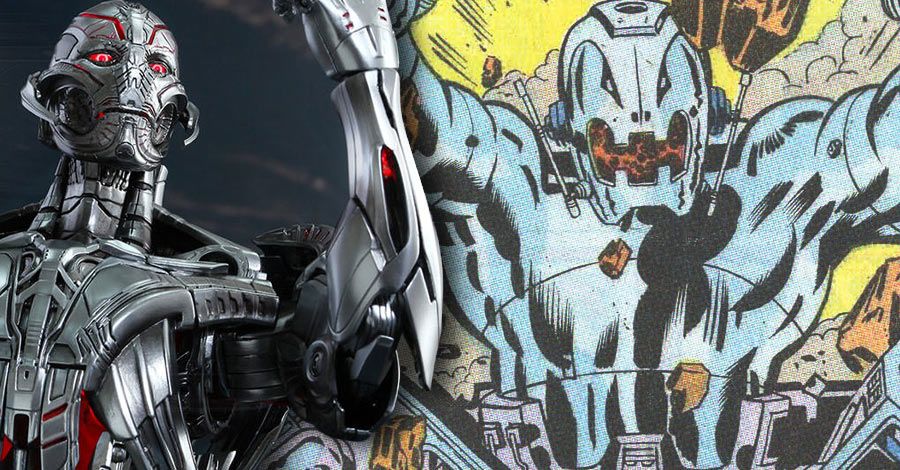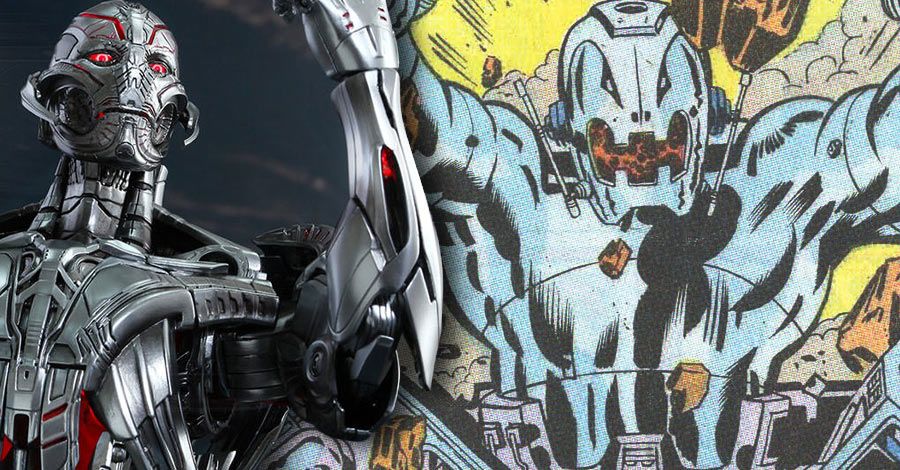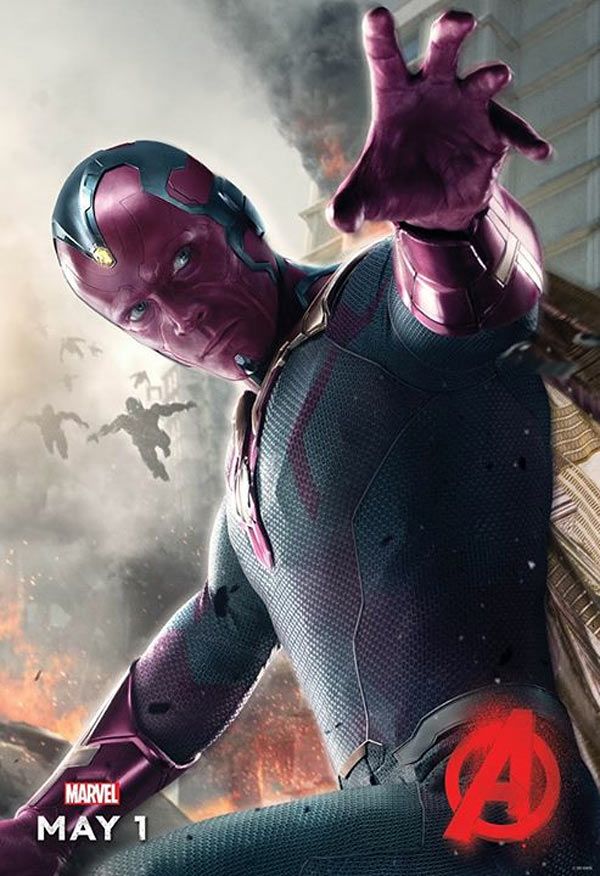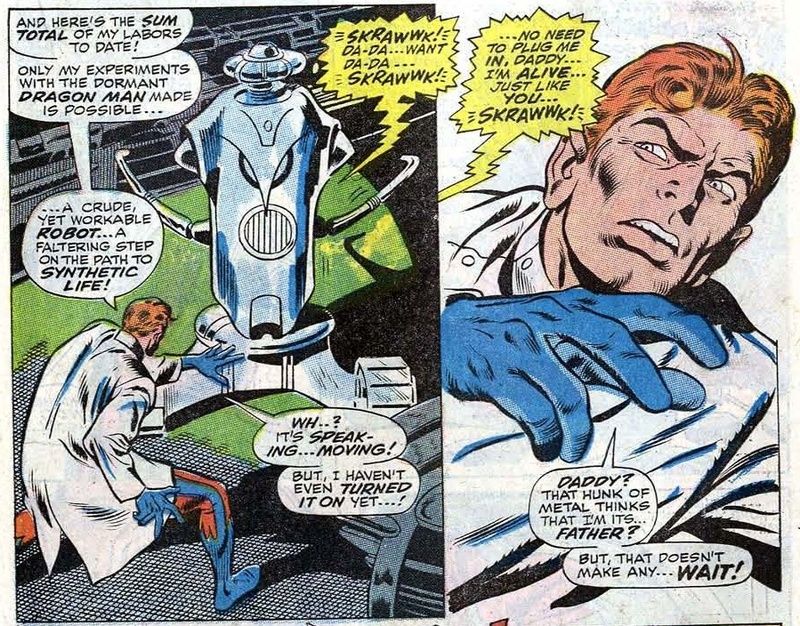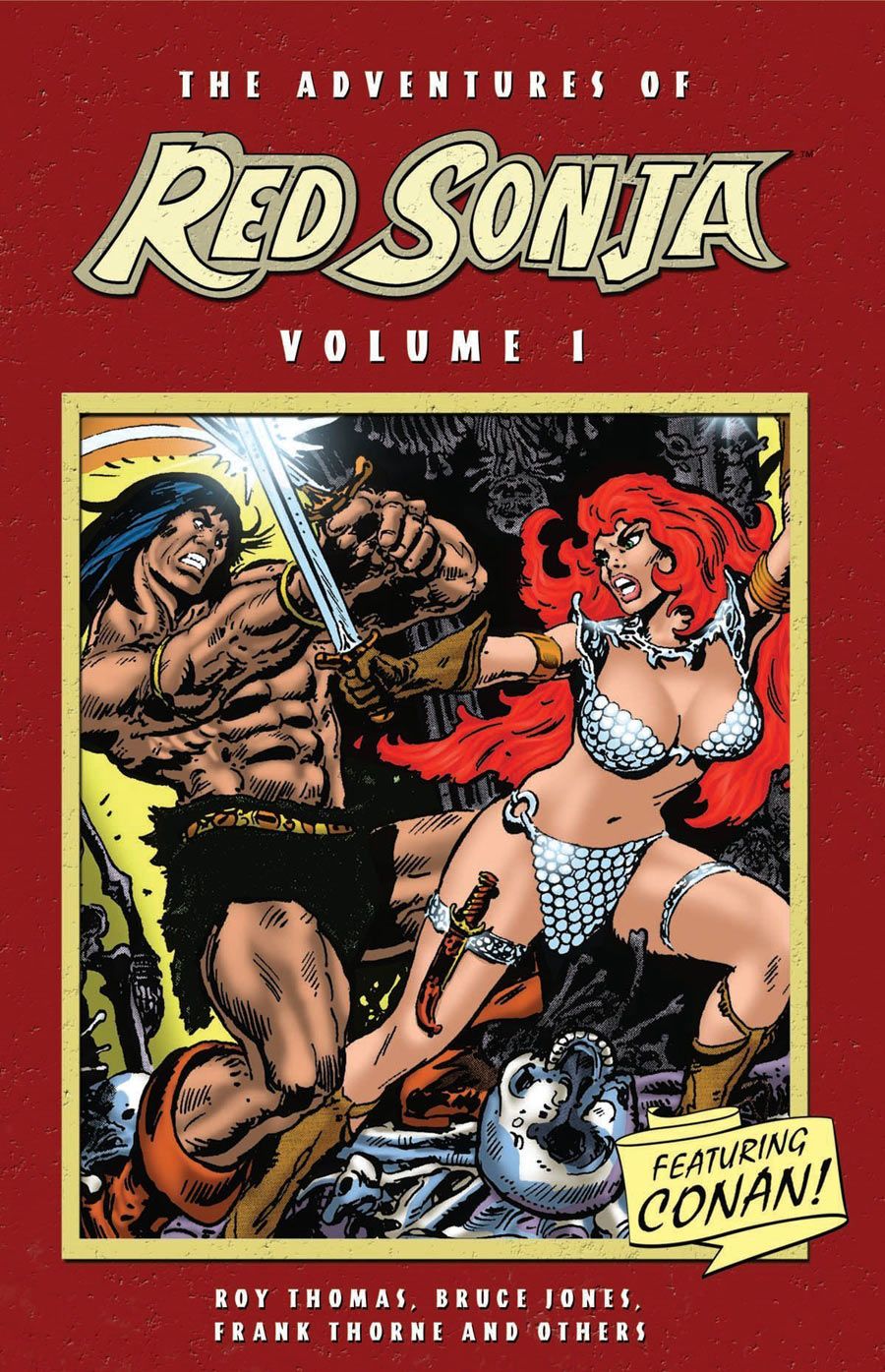This July will mark fifty years working in comics for Roy Thomas, a writer and editor so legendary, whose resume cannot be done justice by picking just the highlights.
Thomas succeeded Stan Lee as the Editor in Chief of Marvel Comics. He co-created dozens of characters ranging from Ultron and Vision to Ghost Rider and Iron Fist. He brought Conan the Barbarian and "Star Wars" to Marvel Comics, and wrote both. In the case of "Conan," he not only wrote one of the longest runs by a writer in modern comics, he left his mark on the character by adding Red Sonja, inspired by Conan creator Robert E. Howard, into the mythos and later writing her adventures. He enjoyed long runs on "The Avengers," "The Invaders," and numerous other Marvel and DC series.
RELATED: Artificial Intelligence: A History of Ultron, the Avengers' New Big-Screen Villain
Currently the editor of "Alter Ego," Thomas writes the daily "Amazing Spider-Man" newspaper strip and is the author of the recent book, "75 Years of Marvel Comics," published by Taschen. The prolific writer spoke with CBR News before leaving his home for Los Angeles to attend the premiere of Marvel's "Avengers: Age of Ultron," which features the debut of two characters he co-created -- Ultron and the Vision -- and also bears some of the sensibility he imbued the series as its writer during the 1960s and '70s.
CBR News: One reason that we're talking is of course because of "The Avengers." When you took over the book, was John Buscema drawing it?
Roy Thomas: No, Don Heck was drawing when I came on for the first bunch of issues. He had been the second penciler of "The Avengers" after Kirby. I inherited it when Stan decided to give up the book with issue #35. About half a year later or so, John Buscema -- who had returned to the company fairly recently -- came in to spell Don for a few issues so he could draw the first "Avengers" annual. Somehow or another, Don never returned to "The Avengers." He ended up with other assignments but I hung onto John on "The Avengers" as long as I could until Stan decided to take him away from me and give him "The Silver Surfer" or something else.
I had the chance to talk with Sal Buscema a while back and he said that he learned a lot from you starting out.
I don't know what he learned from me. [Laughs] He probably learned more from just looking at John's stuff, but we worked together pretty well. Sal was a good storyteller -- and he became an "Avengers" artist, too. He and John were two of the first three people to ever draw Ultron. John was the first and then Barry [Windsor] Smith drew a couple issues and Sal was the third, finishing up a story that Barry and I had started. Some of their handiwork may be on display in the movie.
I'm glad to hear that they're flying you out. You of course co-created The Vision and Ultron, but a lot of what we've come to associate with "The Avengers" is also from your run.
The Vision hasn't been around in the comics for a few years. I don't really follow the comics, but has the Vision been in comics much recently? He was very prominent for a number of years and became the most popular of the characters in "The Avengers" who didn't have his own series at the time. Then it seemed like he fell out of favor.
But the movie audience is not the comic book audience, so it doesn't make any difference. To the movie audience the Hulk is an integral part of "The Avengers." I've never thought of him as such. He was in the first three or four issues, but the reality of the movies is quite a bit different from the reality of the comics. And of course the reality of the comics is whatever you chose to take from fifty or so years of continuity now.
I did want to bring up continuity. I know that one of the original concepts for The Vision is that he was created from the body of the original Human Torch.
I think that was actually something Neal Adams wanted to do. It wasn't my concept. Neal wanted to send Ant-Man -- who hadn't been around "The Avengers" for ages and not as Ant-Man. He said, I'd like to have Ant-Man go inside the Vision and take a look around and he said, "We could make some pages out of it." It was obvious he was thinking about something like the movie "Fantastic Voyage" from a few years earlier. The funny thing is that it was the most memorable sequence in the whole Kree-Skrull War, but it was really nothing to do with the war. [Laughs] It was just something Neal wanted to draw and I figured, why not?
I don't know if he told me this before he drew it or after he drew it, but Neal said, "I had this idea that maybe it's the originally Human Torch's android body." I thought that might be fun to do something with. I never got around to it myself because I had to leave the book a few issues later when I became editor of the company, but Steve Englehart knew about that and he followed through on it later on. These things just build. Neal came up with the general idea, I approved it, Englehart worked on it. It was a collaboration and just trying to have fun and sell a few comic books.
Fairly or not, I've always associated you as a creator who was really interested in continuity.
Very much so.
I think about "The Invaders" at Marvel, "All-Star Squadron" and "Infinity, Inc." at DC, and it felt that you were very consciously crafting this universe and giving the universe a sense of history in a way that others were not.
A reader had come up with the name "the Marvel universe" and Stan latched onto it because he was doing it, he just hadn't thought about a name for it. Once you have this kind of universe -- as opposed to what DC had had before where except for the Justice Society or Justice League, every story was its own thing and you were hardly certain if they were on the same Earth or not. The Marvel universe, partly by the happy accident that Stan was editing everything and writing most of it for some time, ended up having this feel -- which maybe it wouldn't have had if Stan had only been the editor and not also the writer. Once I came aboard you had only eight or ten superhero books but they all were kind of part of a world.
Continuity just came naturally to me. If you're trying to get readers to take your world seriously, it seems to me that you have to take your world seriously enough that you treat it like a real world. Therefore there has to be some continuity. I cannot take seriously a universe in which Batman -- and maybe this is true with Marvel characters, too; I don't know -- becomes a rorschach test for whatever writer or artist. One time he's fairly well adjusted and in this story he's a raving maniac. They don't even seem like the same person to me. I have never been able to get interested in the modern Batman for that reason. If they were consistent and he's a raving maniac all the time, I can go with that. [Laughs] But I can't go with the fact that every time a writer comes along he puts his own spin on it and thinks he has to "redefine" the character. That awful word, redefine. As if everybody else before him was a clown who didn't know how to define the character.
It may not make any difference nowadays. The modern readers may not care so much about continuity. Every year or so it seems like they start everything all over again and wipe out continuity. Another awful phrase: "Everything you know about X is wrong." I just get so sick of that.
That's different than tweaking the character, say.
You always have to tweak the character and develop them. Human beings change and things happen to them. I'm not saying that once in a while it can't be a good thing to do something radical, but it seems to me like it's done almost all the time now. It seems to me the exception is the character who is fairly consistent. Of course I'm seeing that from a distance because I don't read the comics so much recently. I used to keep up with them. After they started the New 52, DC stopped sending them to me. Marvel hasn't sent me comics in years. I would keep up with them if they sent them to me, but I just feel like if Marvel and DC don't care if I read them, I don't care if I read them.
I wish them well. I love the form. I just don't follow it myself anymore.
Do you have a favorite book that you've written?
I don't know. The one I enjoyed writing the most -- maybe not by a huge margin but by a little bit -- was "All-Star Squadron." Second would have been "Conan." After that "The Invaders" and "The Avengers." Those would be maybe my four favorite books. I have a real sentimental fondness for Sub-Mariner but I never thought I did as much with the character as I should have.
Conan is one of those characters that really caught on both in and out of comics.
Readers were writing, telling us to do stuff like Burroughs and Sword & Sorcery and Tolkien. Stan thought it sounded like a good idea and he left it up to me. We didn't think that we could get ahold of Conan, but we stumbled into it. I didn't think I'd write it, but I ended up writing it -- and I ended up doing up as much of it as anyone else ever did.
You wrote the comic for many years, plus there was Red Sonja and others.
Red Sonja and Kull and Solomon Kane. We had a whole little Robert E. Howard empire at Marvel for a little while. Then of course Dark Horse picked it up. Conan was always the one that was the most popular but I'm glad to see Sonja is doing well, too. I was never as interested in writing Sonja as I was Conan but I'm happy to have had a hand in taking that Howard character and making it into a character in Conan's universe.
I'm glad that you mentioned "All-Star Squadron" because I remember coming across it when I was a kid and it wasn't like anything else. There were all these characters I didn't know, the period setting was fascinating. There was not another book like it.
I never had in mind that it was going to be a huge seller. I would have loved it if it had, but I wasn't making a lot of compromises like concentrating on three or four major characters. I kept jumping around. I'd write these characters for a while and then I'd concentrate on some others. I suppose it's probably amazing that it lasted as long as it did. And it would have lasted, if not for that damned "Crisis!"[Laughs]
It's funny -- and you will either find this horrifying or funny -- but I think it's a great preparation to study World War II and other big historical events because it involves this large, sprawling cast of characters in different locations who are tangentially related.
I always thought of it as a history or a historical tapestry. It wasn't like "The Invaders" which always had that center of Captain America, Human Torch and Sub-Mariner even as other characters came in and out. I could have had that in "All-Star Squadron." I had that core at the beginning of Liberty Belle, Robot Man, Shining Knight, Johnny Quick. Then I made up the Firebrand character and I got permission to bring in Hawkman and characters from the Justice Society. Then I quickly got bored with that and I wanted to keep those characters around but do something with Superman and Batman once in a while. And how could you not use Flash and Green Lantern? How could you not use Wonder Woman? Then you find some other minor characters -- Tarantula, for example -- and try to make something out of him. Or make up a few new ones like Amazing Man. It was just a challenge to see what I could do.
I never felt like I got much support from DC. I think that they thought it was a weird comic book. [Laughs] There were some books the company wasn't as interested in doing as some writers and artists were. That's natural because they're in the business to make money. What happens to a lot of writers and artists after they're in the field a few years, they get tired and they want to do their own thing. Everybody's thing is different. Some people's thing will be very personal to them. Mine was "All-Star Squadron" -- to do the history of what if there had been superheroes during World War II.
You're being flown out for the premiere of "Avengers: Age of Ultron," but I have to ask: do you have a cameo in the movie?
No. I would have liked to. I was in touch with [writer/director] Joss Whedon, but I think Stan has those sewn up. [Laughs] That's okay. [Whedon] did say there's one little touch, that I'm not at liberty to mention, about me in the movie -- if it doesn't end up on the cutting room floor. I haven't asked if it's still in there. I'll have to wait to see. The cast has gotten so large that they need time to deal with the people. You've got all the "Avengers" that were in there last time plus you've got Quicksilver and the Scarlet Witch and I don't know what they're going to do about the Vision. They'll do whichever version they want of him.
I'm looking forward to seeing it. I was delighted to see that Ultron looks like Ultron. I figured maybe they would change him more. Of course he has changed at various times -- different bodies, the head's changed a little bit -- but the general look of him has always been the same. I guess that must have struck Joss Whedon the same way. I think I would have recognized him right away as something that looked like Ultron even if I didn't know who that was. I'm pleased about that.
I know that there's a longer issue of "Alter-Ego" coming out this fall which will be about your fifty years in comics.
Originally the issue that was going to be a little about my fifty years, but I've covered that in other interviews. There's more about the '90s. Jim Amash agreed to interview me. I had to put it a little later because being crushed with time working on this Stan Lee book and various other things. It's not a super giant issue, but it is sixteen pages longer than a regular "Alter-Ego." We just made the issue a few pages longer in order to accommodate everything. There are a couple of other little items along with the interview that harken back to that fifty year ago time of the 1960s in New York -- which as everybody knows now from "Mad Men" was an interesting time. I could have run into Don Draper in a bar or somewhere -- I didn't frequent bars -- but Bill Everett might have run into him. They'd have got along just fine.
What is the Stan Lee book that you mentioned?
Yes, that's for Taschen, whom I did the Marvel book for. I'm writing the text but there will be other people working on the pictures and things like that; it's not just my book. It'll be a heavily illustrated giant book and will probably come out next year.
Either this year or next year -- depending on how you count it -- is Stan Lee's 75th year in comics. His first story would have been written and come out by the end of 1940, but it had a cover date of March 1941. "Captain America" #3. That technically also makes next year the 75th anniversary. Since I can't really finish the book in time to get it out this year with all the other stuff I'm doing, it can be next year. I thought it would be nice because Taschen had a 75th anniversary book about DC and a 75th anniversary book about Marvel so here's a 75th anniversary book about Stan Lee.
What else are you working on?
Well, I still work with Stan on the "Spider-Man" newspaper strip, which I wish more papers carried -- because then I'd get a raise. [Laughs] Still going strong after almost forty years. Of course I do "Alter-Ego." There are a couple of other projects here and there. I'd like to get back to developing some comics series of my own, but I've had to put them on hold for the last year or so because of the Taschen books. I just can't find any more time for creative work. There are occasional somethings here or there like an introduction for a Marvel or DC book or to write an 8 or 10-page Red Sonja story. One's come out and the other is in the works. That's fun but except for a couple of little things like that, it's just ploughing away at this handful of major projects.

